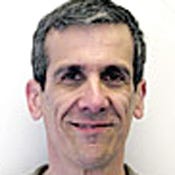Balancing Act: New Tech Can't Slow Real-Time Systems
In addition to making infrastructure changes, the Merc's IT leadership reorganized the IT organization.

In charting technology strategy, Chicago Mercantile Exchange Inc. CIO James Krause and chief technology officer Charlie Troxel try to strike the right balance: to build IT systems that deliver speed, reliability, and efficiency in an unforgiving real-time environment, while also trying to drive innovation with new technology.
The two juggle that with a division of labor in which Krause has a more direct hand leading IT operations, while Troxel finds and introduces new technologies. "It's his job to make things as stable as possible, which means no changes. It's my job to evolve the place, which means change everything," says Troxel, who also leads the Merc's risk-management program.
At times the balance can be tricky.
A case in point is what the exchange calls its historical database. When it was launched in 2001, it was intended to serve a number of functions: re-creating the history of an order (as in response to a regulatory investigation), providing a nightly "reg- ulatory extract," supporting ad hoc queries, and providing backup and recovery in the event of a failure of the exchange's primary database.
However, placing multiple functions on a single platform, a cost-saving move at the time, caused problems once the system began to be swamped by increasing numbers of queries. By 2004, it was processing 500 million messages per week; it was originally designed to handle 5 million messages per week. Performance started to decline, especially for backup/recoverability queries, which require subsecond response times.
The exchange decided last year to create a dedicated database for backup and recovery. In designing it, the exchange benchmarked combinations of operating systems (Solaris and Linux) and database-management systems (Oracle and Berkeley DB, an open-source database distributed by Sleepycat Software Inc.). The winner was Berkeley DB running on Linux. "It demonstrates how new technology can be used to support our real-time processing needs," Troxel says.
In addition to these kinds of infrastructure changes, the exchange's IT leadership reorganized the IT group in the past year. When Krause, who had managed systems development and operations, became CIO, he combined what had been separate divisions for enterprise computing (trading-floor and clearing operations) and technology (strategy, support, and corporate-information systems) into a single Technology and Enterprise Computing division, reporting to him.
Return to main story: This Market's On The Move
About the Author(s)
You May Also Like
How to Amplify DevOps with DevSecOps
May 22, 2024Generative AI: Use Cases and Risks in 2024
May 29, 2024Smart Service Management
June 4, 2024







